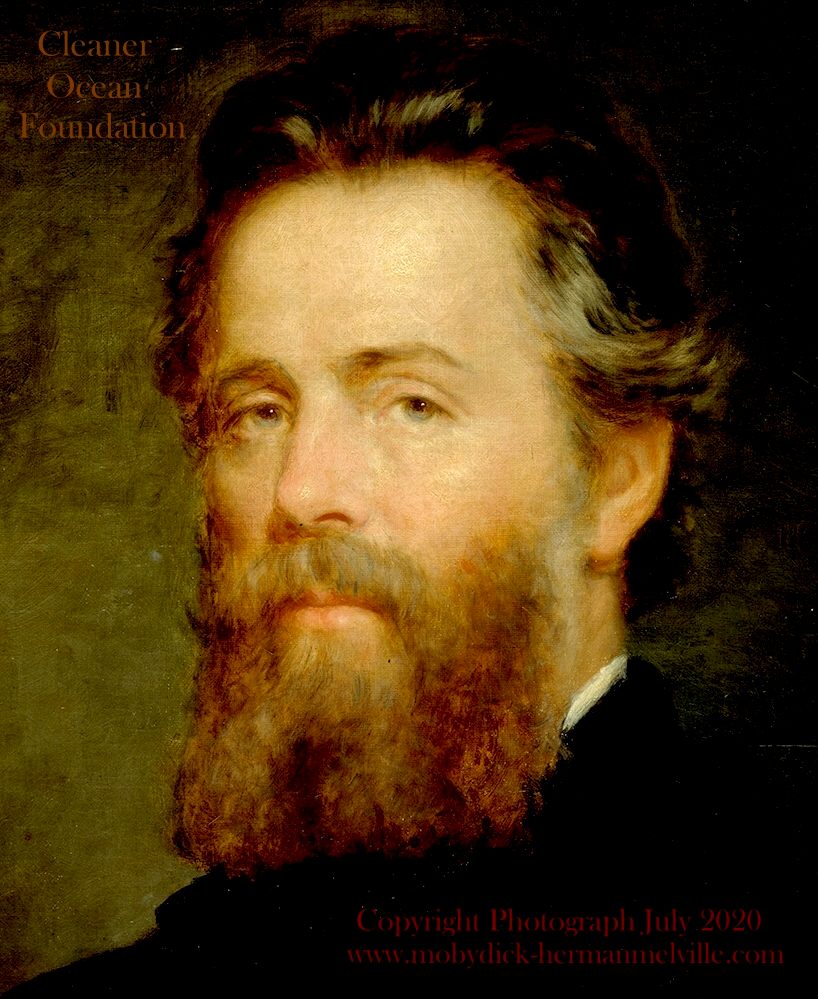
Herman
Melville was the author of Typee. He knew what it was like to be
captive, knowing his captors were lying to him about what their
intentions were for him - as a meal for the tribe. Following his death in New York City in 1891, he posthumously came to be regarded as one of the great American writers.
He survived being eaten by escaping his captors. Fortunately for the
literary world, or we'd not have Moby
Dick.
Humans
are a potential food source in times of extreme hardship. Civilised man
requires a big jolt to resort to eating his comrades, but some natives
still eat human flesh. Waste not want not!
As
the march of global
warming destroys arable land for the production of crops and
livestock, and overfishing wipes out our fisheries, whaling is sure to
re-surface as a means to feed a growing
population, but only as a stop gap. As whales become extinct, humans
are sure to wage war to capture any supplies a neighbour may have,
before turning on each other. A potential World War Three.
As
to the likelihood of international mass cannibalism, let us look at what
history reveals when the groceries run short:
AZTEC
PROTEIN SUPPLEMENT
While most pre-Columbian historians believe that ritual cannibalism took place in the context of human sacrifices, they do not support Harris' thesis that human flesh was ever a significant portion of the Aztec diet. Michael D. Coe states that while "it is incontrovertible that some of these victims ended up by being eaten ritually, the practice was more like a form of communion than a cannibal feast".
Anthropologist Marvin Harris, author of Cannibals and Kings, has suggested that the flesh of the victims was a part of an aristocratic diet as a reward, since the Aztec diet was lacking in proteins. According to Harris, the Aztec economy would not support feeding slaves
(captured in war) and the columns of prisoners were essentially "marching meat".
Once
human flesh had been eaten, it is difficult to argue that the taste thus
acquired would not fuel the desire for more tasty protein, such as one
experiences when passing a fast food burger restaurant.
We know that their religious ideology dictated human sacrifice in order to placate their sun god and prevent the rise of darkness and the end of the world.
The choice method of sacrificial murder was the removal of the heart; after this was done it is generally accepted by anthropologists that the
Aztecs also cannibalized
their sacrificial offerings. The humans sacrificed normally were prisoners of
war, so easier to eat than a relative or friend.
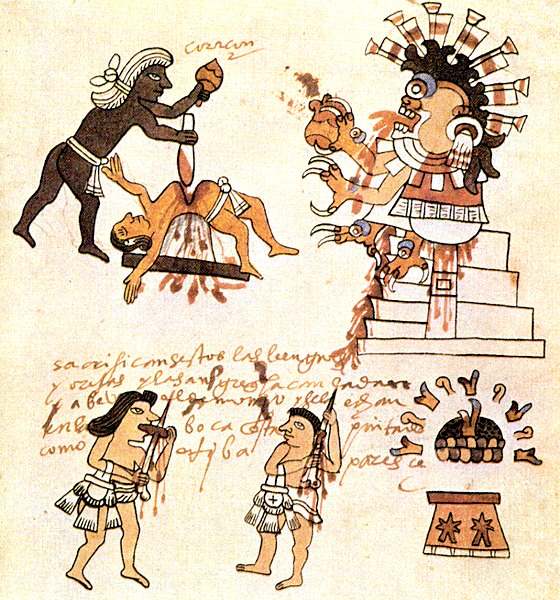
Ritual cannibalism – the eating of human flesh and bones for religious purposes – was an age-old tradition shared throughout a large portion of the Mesoamerican world. Splintered human bones appeared in the garbage at the Preclassic Olmec site of San Lorenzo, Veracruz (ca. 1200-900 B.C.) suggesting that someone had gnawed on them. Sixteenth century reports of the practice come from the Tarascans in Michoacan and the Lacandon Maya in Guatemala. Christopher Columbus regrettably named the practice after the Carib Indians of the Caribbean. He claimed the Caribs ate their neighbors, but this idea lacks strong evidence. Other Spanish explorers, however, experienced cannibalism first hand. One of Hernán Cortés’ eventual translators, Jerónimo de Águilar, watched the ritualistic consumption of four of his shipwrecked companions. This spurred him and his remaining friends to escape from the wooden cages in which they were imprisoned by their Maya captors. The Aztecs continued this tradition of eating their captives, although sometimes with a more “familial” feel.
The general agreement seems to be that cannibalism never served as the principal source of protein for human diets. There are differences of opinion concerning lesser contributions. Garn and Block consider that consumption of less than one man per week per group of 60 (equivalent to 87 percent of the population per year) would not be significant even as a supplement to a cereal or tuber diet. Vayda takes the position that cannibalism may be of critical importance as a source of protein to individuals who are wounded or under severe stress leading to a negative protein balance. Dornstreich and Morren (on whom Harner relies) argue that a contribution from cannibalism ranging from 5 to 10 percent of protein need would be significant and comparable to the contribution from pork in New Guinea. To achieve this level they required a consumption of 10 to 15 adults per year in a population of 100 (46 adults and 54 children).
The amount of protein available to Aztec noblemen from cannibalism can be calculated on the assumption either that the total body was consumed or that more probably, and in agreement with Harner, only the extremities of sacrificial victims were consumed. I use the figures cited by Harner from unpublished data by Borah for the sake of the argument without implying agreement with the figures themselves. The estimates are certainly excessive because many women and children were sacrificed and their body weight would be much lower than that assumed for the purpose of calculation. Furthermore, many of the festivals during the year were dedicated to Tlaloc, the rain god, and victims sacrificed to him were usually buried intact. This practice would certainly reduce the ratio of victims consumed to the total executed.
The protein requirements for the portion of the population that was allowed to partake of human flesh (25 percent, according to Harner) is calculated by multiplying the daily protein requirement of 0.71 g of protein per kilogram of body weight (39) by an average body weight of 60 kg per consumer multiplied by the number of consumers times 365 days. Tenochtitlan's consumer population of 75,000 (300,000 x 0.25) would require 1.2 x 106 kg of protein per year. The protein requirements of Central Mexico with a consumer population of 6.25 x 106 (25 x 106 x 0.25), would be 97 x 106 kg per year.
Calculation of the protein available from sacrifices requires several assumptions. Assume that all victims are 60-kg males consisting of 16 percent protein with a digestibility of 90 percent. This percentage is between the values given by Garn and Block and by Dorstreich and Morren and is approximately the percentage of protein in lean beef (16.5 percent), lean lamb (16.5 percent), or lean pork (14.5 percent). Skillful butchering would give a 60 percent dressed yield. Thus, a 60-kg victim would yield 5.18 kg of protein (60 kg x 0.16 x 0.60 x 0.90). Information about the percentage of total body weight represented by the extremities is hard to find. The Wayne County Medical Examiner estimates that the weight of the extremities would equal 35 percent of the total weight if the buttocks and shoulders were included as part of the extremities. If only these extremities are eaten, the protein yield per 60 kg of captive would be 1.81 kg.
The only case where cannibalism would fall in the range of 5 to 10 percent of dietary need would be that of Tenochtitlan (where Harner assumes that 5 percent of the population would be eaten annually), and only if the entire bodies of all the victims were consumed. As stated above, the number and size of victims actually available was almost certainly smaller than the number of which Table 3 was based. Thus, the contribution of cannibalism to the diet of the Aztecs can hardly be considered significant.
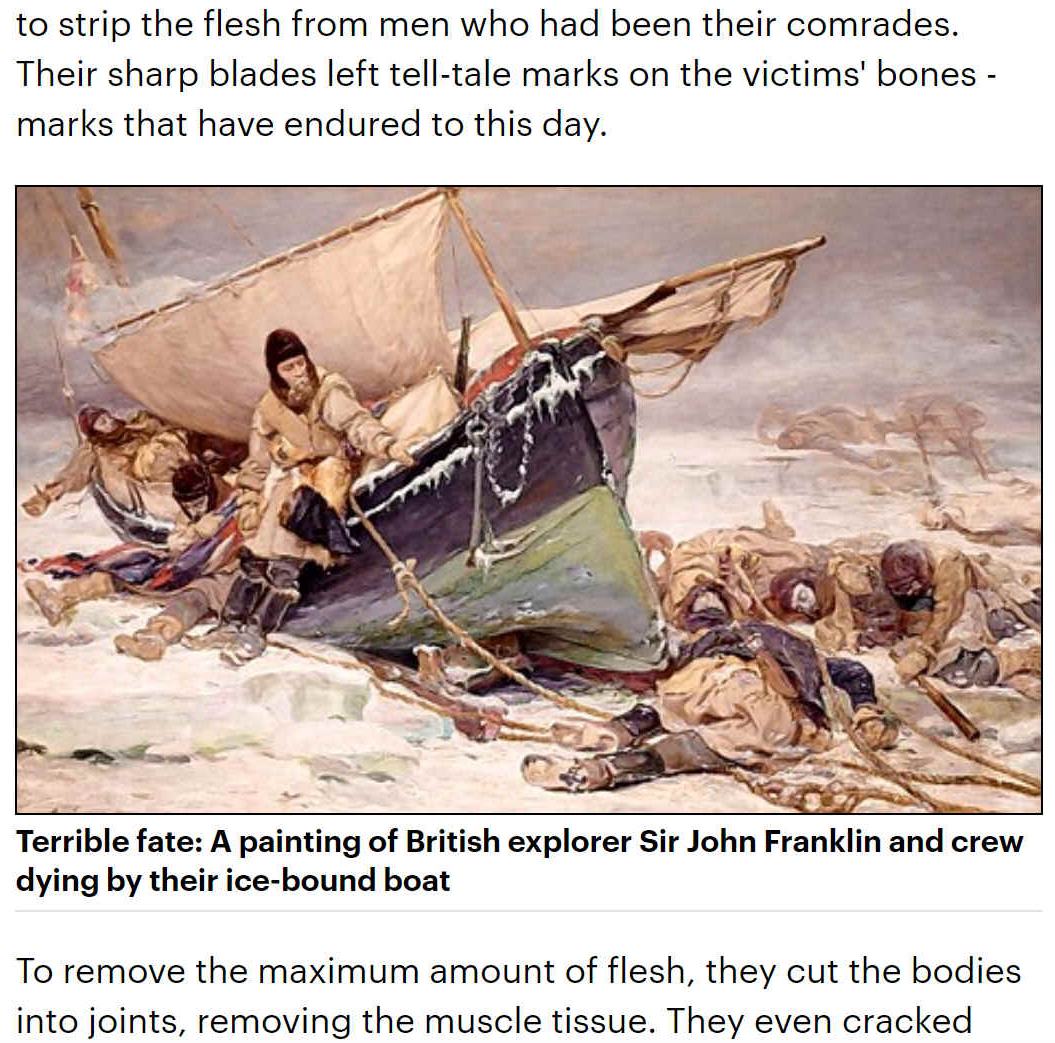
DAILY MAIL - JUNE 2009 - BRITISH NAVY CANNIBALS C. 1848
We cannot know when it started, nor who took the gruesome decision, but some time in May 1848, British sailors from HMS Erebus and HMS Terror began butchering and eating their comrades.
Did they kill the living, picking out the weak, the young and the expendable? Or did they confine their attentions to the dead? That, too, history cannot tell. But one thing is certain, the sailors ate their shipmates - not just one or two of them, but 40 or 50. Perhaps more.
The British seamen carefully and deliberately used their knives to strip the flesh from men who had been their comrades. Their sharp blades left tell-tale marks on the victims' bones - marks that have endured to this day.
To remove the maximum amount of flesh, they cut the bodies into joints, removing the muscle tissue. They even cracked open the larger bones to extract the marrow. And they didn't stop there.
In the handful of similarly gruesome cases where desperate men have turned to cannibalism to stave off starvation, the heads and hands of the victims are usually removed and discarded, too human to be eaten. The men of Erebus and Terror were not so squeamish. They took the heads, ripped off the jaw-bones and stove in the bases of the skulls to get at the brain.
After the heads were done, they scavenged for scraps, flaying the flesh even from the fingers, stripping off every last remnant.
Precisely how many men took part in this barbaric banquet we will never know. No one lived to tell. There are still those who insist it did not happen. But forensic science is a precise art, and the evidence is overwhelming. The Arctic expedition of Captain Sir John Franklin ended in cannibalism on a scale beyond even the darkest rumours of the time.
So how did a quest that set out for the noblest of causes under the leadership of a hero end in such savagery? When Sir John embarked on his final voyage to the Arctic in 1845, he was already a veteran of the battle of Trafalgar, whose formidable exploits at sea and on ice had earned him a reputation for endurance and courage.
In 1819, Franklin, then a naval lieutenant, had led an expedition to the Arctic that ran out of supplies. The starving men were reduced to eating their leather boots. Ten men died of starvation and hypothermia and at least one was murdered by his comrades.
Nonetheless, the expedition returned and Franklin became an Arctic celebrity, 'the man who ate his boots'. He led another
Arctic expedition in 1825, cementing his reputation as a skilled
navigator, scientist and leader, and was knighted on his return.
Franklin rejoined the naval service and served as a ship's captain in the
Mediterranean, but he yearned to return to the Arctic, urged on by his second wife, Jane. Having married the romantic hero who'd been famed for his bravery, she would not settle for being the wife of a mere naval captain.
But Franklin missed out on the next few Arctic missions. Instead he was appointed governor of Tasmania, where his humane, reformist attitudes brought him into conflict with the local establishment, causing the colonial office to recall him.
So he was back in London in 1844 when a proposal was laid before the Admiralty for an expedition to 'complete the discovery of a North-West Passage', the fabled sea route through the Arctic ice, for which mariners had been searching for 300 years.
If it existed, it would provide a profitable short-cut for ships heading from Europe to the West Coast of America and China.
However, the real object of the expedition was to take magnetic readings at or near the magnetic North Pole as the final element in a global 'imperial science' project to finesse the skill of navigation aboard British ships.
The readings were crucial because of the way the earth's magnetic field affects the functioning of the compass, critical for a maritime empire. Franklin, aided by Jane, successfully lobbied for command of the expedition.
Although he was nearly 60 and overweight - at 5ft 6in and 15 stone - he had extensive Arctic experience, leadership and was a first-rate magnetic scientist.
Franklin appointed Francis Crozier, an Antarctic veteran, as his second in command. On May 19, 1845, the two ships, laden with 129 men and enough magnetic hardware to equip an observatory, went to sea buoyed up by euphoria and good wishes.
Few were concerned when Franklin failed to report after his first year in the Arctic. He had urged his friends and family not to expect him home until his supplies had run out. He told the captain of a whaling ship he encountered in July 1845 that he had enough provisions for five years, but that he could eke them out for seven.
The Admiralty finally began to think about sending a relief mission in late 1846, prompted by Lady Franklin. However, some Arctic experts thought it 'absurd to entertain the smallest degree of alarm'. It would suffice to offer rewards for information to whalers and traders in Hudson Bay, south of the Arctic.
But the whalers had no idea where to look. Franklin's course was a complete mystery.
Not until the spring of 1848 was a search expedition sent, headed by Arctic veteran Sir John Richardson and accompanied by Dr John Rae of the Hudson's Bay Company.
They headed down the Mackenzie River in the North-West territories, coasted east but found nothing.
Two more ships sailed for the Arctic to make a rescue effort, but they, too, found no trace of the lost expedition.
Desperate that her husband must be found, Jane recruited public opinion to her cause, cultivating allies within the Admiralty.
Over the next decade, ship after ship, British and American, was sent to trawl the icy seas, long after any realistic prospect of finding Franklin alive had receded.
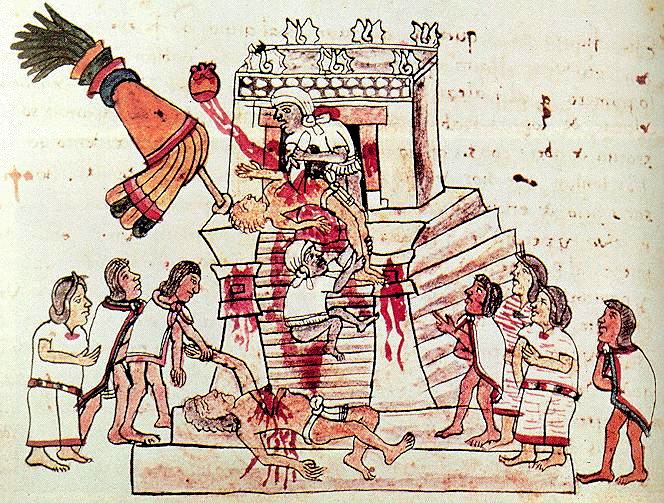
Sacrificial
cannibalism, a valuable source of protein for those starving and in need
of a nutritious meal. Save the heart for the chiefs. Move over Texas
Chain Saw Massacre. The Aztecs made their meals ceremonial events.
Then an expedition in 1850 found evidence of Franklin's first winter camp on Beechey Island in what is now the Canadian arctic: food tins, the graves of three men who had died early in 1846, but no written records.
Years past and it was not until the autumn of 1854 that the fate of Franklin and his 129 men was finally uncovered, when terrible news reached Britain from the Arctic.
John Rae, on another of his Hudson's Bay expeditions, had encountered a party of Inuit who had trophies from Franklin's kit in their possession: a gold cap band and Franklin's order of Knighthood.
The Inuits told Rae that they had not met the British sailors, but knew others who had. They said that the white men had all died some years before, and the all-important paper records had been thrown away.
There was worse. Rae's contacts told him that when a large group of survivors had been encountered by Inuits on nearby King William Island some years earlier, they had been in a poor condition, afflicted with scurvy.
The Inuits also told the Englishman that human bones had been found, and as Rae later reported it: 'From the mutilated state of many of the corpses and the contents of the kettles, it is evident that our wretched countrymen had been driven to the last resource - cannibalism - as a means of prolonging existence.'
Rae's news horrified the public. Charles Dickens refused to accept it, dismissing the Inuit account as 'the chatter of a gross handful of uncivilised people'.
He speculated that the 'covetous, treacherous and cruel Inuit' had murdered the survivors. It was inconceivable that a party led by British officers could have stooped to cannibalism: gentlemen did not eat human flesh.
Finally, in May 1859, near a place called Victory Point, her search expedition under the command of a man named Francis McClintock found a cylindrical tin containing what appeared to be a written record of the Franklin expedition.
'Having wintered in 1846-7 at Beechey Island - All well,' stated the record confidently. Nearby, another copy was found with a hastily added note that told a very different tale.
'1848, HM Ship[s] Terror and Erebus were deserted on April 22 having been beset [by ice] since September 12, 1846 - Sir John Franklin died on June 11, 1847, and the total loss by deaths in the expedition has been to this date nine officers and 15 men. Start tomorrow 26th for Backs Fish River.'
There was no claim that the expedition had discovered the North-West Passage, but it did reveal that Franklin had not lived to witness his expedition dissolve into savagery.
After Franklin's death, his men had marched south across the pack ice in a desperate quest for landfall. They would have been weakened by scurvy that left them susceptible to pneumonia, and ill-prepared for a march dragging sledges after three years on a ship.
Once the men realised their fate, the bounds of civilised behaviour were loosed. The majority remained on
King William Island.
Rae's Inuit witnesses had spoken of a large camp with graves, cannibalised bodies and skulls.
A party would then have headed east. The survivors met an Inuit hunting party in Washington Bay.
Around 40 men were present, all suffering from scurvy, and the Inuit were convinced they saw evidence of cannibalism: an Inuit hunter had told Rae that the men had boots filled with cooked human flesh.
It was not until 1981 that a modern day expedition stumbled on the final proof of what had taken place.
They uncovered a human femur with knife cuts, a broken skull and a disproportionate quantity of limb bones suggesting that Franklin's men had been carrying the most portable joints with them as they marched.
In 1992, a new Franklin site was discovered. Here, human bones were found scattered. Some 25 per cent showed evidence that they had been cut with
steel knives, consistent with chopping and
de-fleshing for consumption. Three major bones had been broken in a manner that would expose the nutritious bone marrow.
Forensic science has proved beyond doubt the appalling fate of her husband's crew - men who died in the most horrific circumstances, their hands stained with the blood of their comrades.
Only one question remains: did the Franklin party kill and eat the living, or simply cannibalise the dead?
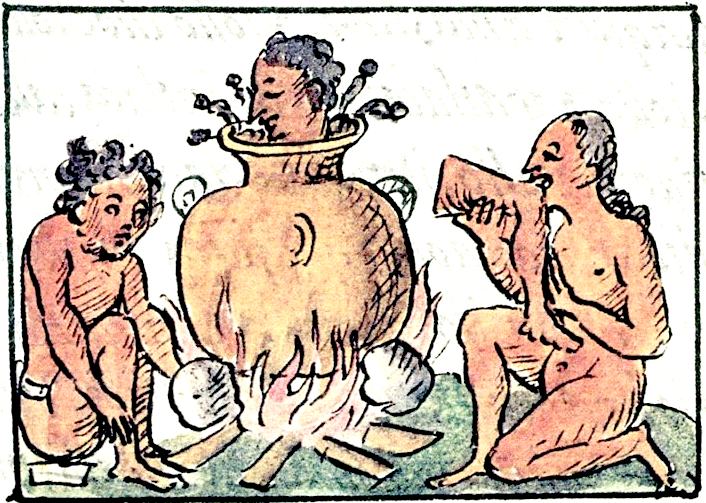
ARM
YOURSELVES AND PREPARE FOR THE WORST
What
we can see from these documented cases, is that when the food runs out,
humans regard other humans as food. With around 9
billion souls on the planet (if) when that happens, there will be
plenty of meat to go around.
In
Europe, make sure you have bows, arrows and knives so that you become
the hunter rather than the meal. In the US, make sure you have pistols
and rifles, if you are to survive. Fortify you homes from attack. You
need to become a hard target. You'll also need protein, so work out who
to eat first. Obviously, those who are less useful in a society that is
bleached by rising temperatures. But if you have any enemies locally,
eat them first, for they will surely target you. It will be kill or be
killed!
Being
fit is given new meaning. You'll need to be strong and alert to survive.
So, take your vitamins and learn how to prepare pork. See the Hannibal
Lecter cook book.
Beware
of (hungry) mobs. Politicians will be eaten first for having taken us to
the brink - and ultimately the ones responsible for the carnage that is
inevitable, unless we row hard in the other direction. It might pay to elect
politicians who care about the planet
- rather then getting rich, and actually do something to give us food
security. Otherwise, voting will come down to deciding which
politicians to eat first. We are sure that Donald
Trump will feature highly on the US menu. In the context of eating
humans to survive, his wife looks quite tasty. Hannibal Lecter:
"I'm giving serious consideration to eating your wife."
DON'T
BELIEVE EVERYTHING YOU READ, ED GEIN, PSYCHO, THE TEXAS CHAINSAW
MASSACRE & SILENCE OF THE LAMBS
Three
famous films were based on a real life serial killer named Ed Gein. He
was a mild-mannered Wisconsin farmhand who stunned an unsuspecting
nation - and redefined the meaning of the word “psycho.” The year was 1957.
The place was an ordinary farmhouse in America’s heartland, filled with extraordinary evidence of unthinkable depravity. The man behind the massacre was a slight, unassuming Midwesterner with a strange
smile - and even stranger attachment to his domineering mother. After her death and a failed attempt to dig up his mother’s body from the local cemetery, Gein
robbed other graves and, ultimately, committed multiple murders to
obtain his bodies.
Driven to commit gruesome and bizarre acts
that defy imagining, Ed Gein remains one of the most deranged minds in the annals of American homicide.
It is unclear if he ate any part of his victims, but that is more than
likely, being a farm hand where slaughter is inevitable for livestock.
What else would be do with all that meat?
Hamilton
(Albert) Fish, who had a penchant for young boys, also ate a number of
them. It seems that as with cannibalism, one act leads to another. He
also murdered and ate Grace Budd (10) over a period of nine days - self
confessed.
Three
years later Alfred Hitchcock made Psycho,
released in 1960. The Texas Chainsaw Massacre was released in 1974 and
Silence of the Lambs in 1991. All three films use parts of the finds in
the Ed Gein case, in various ways - all disturbing. Especially the
Chainsaw Massacre, where the producer deliberately advertised that it
was a true story, rather than was a fiction loosely based on the Gien
house discoveries.
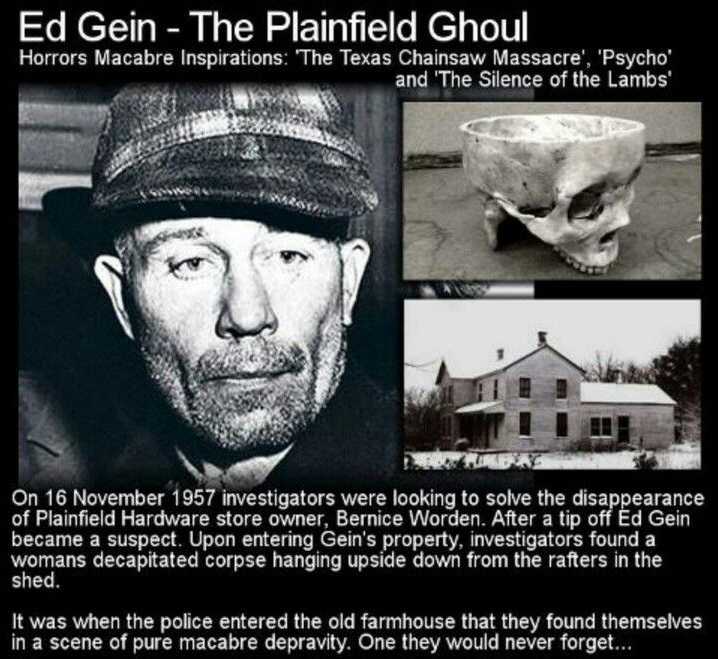
EDWARD
GEIN
The real-life model for terrifying horror movie psychos like Leatherface, Buffalo Bill, and Norman Bates was a man named Ed Gein, whose actual exploits were even more shocking than the movie plots they inspired. Who was this man and what did he do that made so many filmmakers fictionalize his story over the years?
Edward Theodore Gein was born in a small Wisconsin farming community in the early 1900s, and is one of the most notorious serial killers from Wisconsin. Gein’s mother Augusta was a controlling,
domineering (Red Dragon), and deeply religious woman who isolated Ed and taught him that women were evil. The two lived alone after the deaths of Ed’s father and brother. After her death, Ed began to act on his morbid fascination with the female body.
He studied anatomy texts and accounts of the terrible experiments performed by the Nazis in concentration camps. He then moved on to grave
robbing, digging up recently buried female corpses from nearby cemeteries. He chose the bodies of women who were roughly the age of his mother at the time of her death. He dissected the bodies, keeping the sexual organs and making “suits” out of the skins (the inspiration for Buffalo Bill in Silence of the Lambs).
At some point he moved on from grave robbing to murder, choosing middle aged women similar to his mother as his victims. The reclusive Gein’s presence in town was connected to the disappearance of one local woman, and when authorities went to his isolated farmhouse, they discovered a true house of horrors. The farmhouse was filled with Ed’s ghastly
souvenirs - a real life scene from Texas Chainsaw Massacre.
Among the discoveries: a decapitated and gutted female body hung upside down in the kitchen (the most recent victim); bowls made out of skulls; lampshades, chair upholstery, and a wastebasket made from human skin; nine skinned faces of women hanging on the bedroom wall; a belt made of nipples; skulls on the bed posts; leggings and a corset made from skin; and a box full of female private
parts (Jack The Ripper).
The remains of at least 15 female bodies were found at the house. Gein told authorities he enjoyed dressing in the female skins and masks and pretending he was his mother.
He spent 10 years in a mental hospital until he was declared fit to stand trial. He was found guilty of murder…and also criminally insane. He spent the rest of his life in two different mental institutions, dying at the age of 77 in 1984.

TEXAS
CHAINSAW MASSACRE - TRUTH DECEPTION
Producer/director,
Tobe Hooper cited changes in the cultural and political landscape as central influences on the film. His intentional misinformation, that the
"film you are about to see is true", was a response to being
"lied to by the government about things that were going on all over the
world", including Watergate, the 1973 oil crisis, and "the massacres and atrocities in the Vietnam
War".
The "lack of sentimentality and the brutality of things" that Hooper noticed while watching the local news, whose graphic coverage was epitomized by "showing brains spilled all over the road", led to his belief that
"man was the real monster, just wearing a different face," so
he put a literal mask on the monster in his film.
One
could argue that the other G20
countries and United Nations
are not much better that America, in allowing desertification and the extinction
and mass murder of hundreds of species from climate
change. Tobe Hooper was right about manipulation of the media. He
passed in 2017 and was not eaten.
TYPEE
In
his book Typee: A Peep at Polynesian Life, Herman Melville, experienced
the fear of knowing that he could be eaten and was a potential meal,
being a captive. Otherwise why would they hold him prisoner? Typee made
Melville notorious as the "man who lived among the cannibals".
Most American reviewers accepted the story as authentic, though it provoked disbelief among some British
readers, even though English explorers were known to have eaten each
other during failed Arctic expeditions and the sailors who survived the
sinking of the Essex in 1820, did so by eating
their crew mates.
Two years after the novel's publication, many of the events described therein were corroborated by Melville's fellow castaway, Richard Tobias "Toby" Greene.
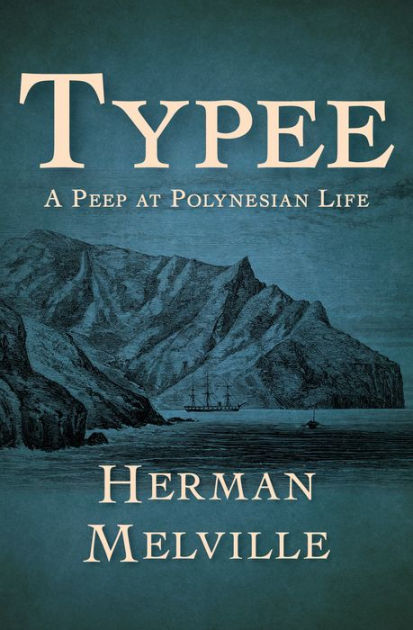
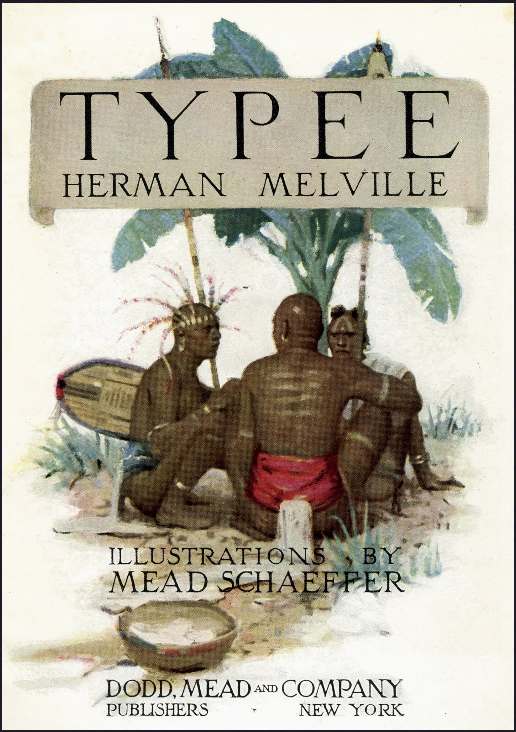
PUBLICATION
Typee was published first in London by John Murray on February 26, 1846, and then in New York by Wiley and Putnam on March 17, 1846. It was Melville's first book, and made him one of the best-known American authors overnight.
Where Typee natives ate an inhabitant of one of the neighboring valleys,
the natives who captured Herman Melville reassured him that he would not be eaten.
It was obvious to him that he would be on the menu when the time was
right. Such as a special feast.
HERMAN'S OTHER BOOKS
Typee (1846)
Omoo (1847)
Mardi (1849)
Redburn (1849)
White-Jacket (1850)
Moby Dick (1851)
Pierre (1852)
Israel Potter (1855)
The Confidence-Man (1857)
Billy Budd (1924)
LINKS
& REFERENCE
https://www.mexicolore.co.uk/aztecs/home/aztecs-and-cannibalism
https://ambergriscaye.com/pages/mayan/azteccannibalism.html
Please use our
A-Z INDEX to
navigate this site








